Captain Von Trapp and I are deeply concerned
Sailing through the past—and a worrisome future—in Central Europe
Our extended family got back last week from the trip of a lifetime: a cruise on the Danube, from Budapest, Hungary to Vilshofen, Germany.
It’s not the sort of travel we normally do. We’re more DIY-types—guidebooks, not guided tours; crashing with friends or renting Airbnbs, not staying in places where turndown service is a thing. Meanwhile, I am not a big fan of boats, as I like having the option to leave any given place at any given time, which is not possible when you’re surrounded by water. However, due to the specific health needs of various family members, and thanks to great generosity on the part of my in-laws, we opted for a river cruise.
It was decidedly weird to be traveling in such a cushy way. (Note that “Cushy” would also be a good way to describe my stomach and thighs right now, in spite of the best efforts of Milosz, the slightly scary Serbian fitness director on the cruise.) But it was also decidedly fucking amazing. And as it turns out, being on a boat on a river, as opposed to the ocean, was not that unpleasant at all for claustrophobic, boat-averse me. In fact, it was quite lovely.
(Aside: Best boat-related quote of the trip was from my kiddo Elm, upon entering the lobby. “There’s a chandelier here? The only other time I’ve seen a chandelier on a boat is on the Titanic.”)
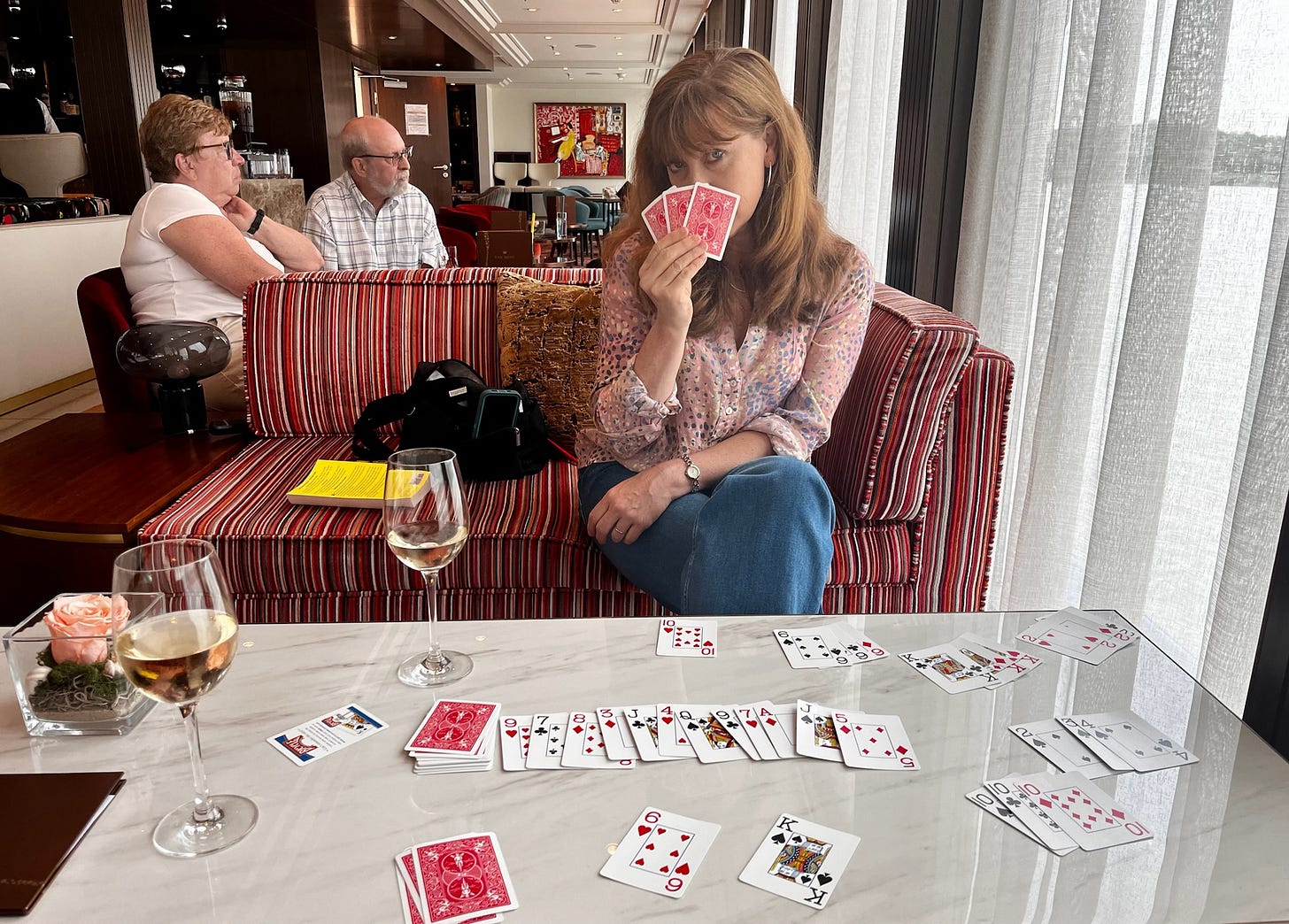
But the river cruise life is not I’m here to write about. What I’m here to write about is history: the undercurrents of it that I felt running throughout the whole trip, and my awareness of its echoes in our present day.
Of course, being more cognizant of the long sweep of human history isn’t unexpected when you visit places where, for example, an abbey built in 1410—which got a trendy baroque makeover in 1710—isn’t the oldest attraction in town. That would be the ruins of the castle built in 1130, where King Richard the Lionheart was once held captive for ransom.
As I’ve written in the past, I sometimes find it comforting to remember just how long the course of human history is. Oceans rise, empires fall, etc. It helps put the drama of the day in perspective—assuming that drama isn’t, you know, actively destroying your life.
But on this trip, thinking about the Romans and the Visigoths and all those nutty Habsburgs didn’t do much to ease my current worries with regard to the state of the world—specifically the rightward way the political pendulum is swinging in the U.S. and Europe. Or the way a lot of people seem to want it to swing, anyway.
As we made our way up the Danube, I felt keenly attuned to Europe’s much more recent history: the rise of fascism in the 1920s-1940s, the victims it claimed, and the millions who stood by while it all happened, unable or unwilling to stop it. Meanwhile, we were getting the news from back home, where the conservative-packed Supreme Court was doing lovely things like making it legal to jail homeless people, weakening the regulatory powers of the EPA and SEC, and, oh yeah, ruling that the president has immunity for criminal acts committed while in office.
Not a great combo.
Sorry, you expected a fun travelogue, didn’t you. I’m afraid my heart is a bit too heavy for that. But let’s take a brief break here for a fun picture, taken in a public restroom in Vienna.
Good? OK. Back to politics.
One of the most unsettling moments of the trip for me was when we happened upon a monument in Budapest erected ten years ago by the government—Trump’s buddy Viktor Orbán’s government, specifically—commemorating the victims of the German occupation of Hungary during World War II. Actually, what I saw first was not the monument itself, but the makeshift memorial and signs of protest in front of it.
The reason for the controversy around the monument—which depicts the archangel Gabriel, a symbol of Hungary, being attacked by an eagle representing Germany—is that it implies that Germany that was solely responsible for the mass deportation and killing of Hungarian Jews, gays, Roma and others during the war.
The reality is that for years before the Germans came on the scene, the Hungarian government was actively persecuting Jews with forced labor, anti-semitic laws, deportation, and worse. And when the Nazis occupied Hungary, the Hungarian government and its military and police forces actively, willingly aided in the killing and deportation of Jews and others. (This was also part of the plot of the historical movie I inexplicably tortured myself by watching on the plane ride home, The Zone of Interest.)
To look at that monument, though, you’d never know the truth.
This is what autocratic leaders like Orbán and their political cronies do. They use misinformation, propaganda, half-truths, and revisionist history to advance their agendas, and (often) create an illusion of a perfect past.
They’re also very good at convincing people—and these days it’s easier than ever, thanks to the Internets and assistance from Russian disinformation—that their perfect country is being destroyed by immigrants and radical leftists and feminists and LGBTQ people. Take it back! they say. Make it great again!

Remember that part about Trump being an Orbán fanboy? It’s not just Trump; it’s a broad swath of people and thinkers and politicians on the extreme right in the U.S., including the Heritage Foundation. Their vision for America, as laid out in a little thing called Project 2025 that you may have heard of, is very much inspired by Orbán’s vision for Hungary. According to Heather Cox Richardson, Heritage Foundation president Kevin Roberts has has called modern Hungary “not just a model for conservative statecraft but the model.” In 2023, the Heritage Foundation formed a formal partnership with Hungary’s Danube Institute, a state-funded right-wing think tank.
I recommend reading Cox Richardson’s entire recent post on the topic of Project 2025 and the Hungary connection, but in the meantime, at least read this paragraph. Wait, no. First, take a breather and enjoy this picture of my daughter posing next to a little statue outside a bakery in Bratislava, Slovakia, that’s supposed to look like a traditional pastry they sell, but that actually looks like…well. Not a pastry.
Ha ha.
Back to Heather Cox Richardson:
“As soon as [Orbán] retook office in 2010, he began to establish control over the media, cracking down on those critical of his far-right political party, Fidesz, and rewarding those who toed the party line. In 2012 his supporters rewrote the country’s constitution to strengthen his hand, and extreme gerrymandering gave his party more power while changes to election rules benefited his campaigns. Increasingly, he used the power of the state to concentrate wealth among his cronies, and he reworked the country’s judicial system and civil service system to stack it with his loyalists, who attacked immigrants, women, and the rights of LGBTQ+ individuals. While Hungary still holds elections, state control of the media and the apparatus of voting means that it is impossible for the people of Hungary to remove him from power.”
Could this happen here? Yup, that’s the plan. And parts of it are well underway.
Look, I don’t tend to be an alarmist. I don’t think we’re headed for all-out fascism, or another Holocaust-like event. But I’m deeply worried about what’s ahead for America, and especially for its most vulnerable citizens, including my own genderqueer kid (not pictured), if Trump takes the presidency for a second time. I worry about crackdowns on freedom of the press and protest. I worry about the draconian measures that may be taken with undocumented immigrants. I worry about women’s reproductive freedom being even further curtailed. I worry about the social safety net being gutted. And I worry about our country becoming a place where elections don’t matter.
I’ll end with this: One of the highlights of our trip was a full-day Sound of Music tour. (Anyone who knows me, or who has read this Substack for any length of time knows that The Sound of Music is one of my favorite things. See what I did there?) The scenery was stunning, and it was super fun to see the hills and landmarks where Maria and the Von Trapp children frolicked on screen.
But as we tooled about Salzburg and environs, there was a particular scene from the movie I just couldn’t get out of my mind. It’s the one where 17-going-on-18-message-boy-turned-Nazi Rolf shows up to deliver Captain Von Trapp the telegram ordering him to report to duty with the Third Reich. After Rolf leaves, the Captain is staring off into the distance, and the Baroness says to him, “You’re far away. Where are you?”
He replies, “In a world that’s disappearing, I’m afraid.”
Oh, Captain, you sexy bastard. I feel you.
But I don’t want to end on that somber note—because there is still time, and there is still hope (good job, France), and there is still work we can all do to keep our country from slipping toward autocracy and Christo-fascism. And along the way—and no matter what happens down the line—we have to keep celebrating the positive and embracing all that’s good and precious in our lives. That includes spending time with family, relishing the beauty in this crazy world, doing squats with Milosz, laughing at poop-shaped pastry mascots, and imbibing delicious beverages.
I feel incredibly lucky to have been able to do all of that and then some last week.
Prost.
All posts on Jane’s Calamity are free and publicly available, but writing is how I make my living, and AI is presently f*cking over my day job. If you enjoy my work, please consider upgrading to a paid subscription or buying my book.


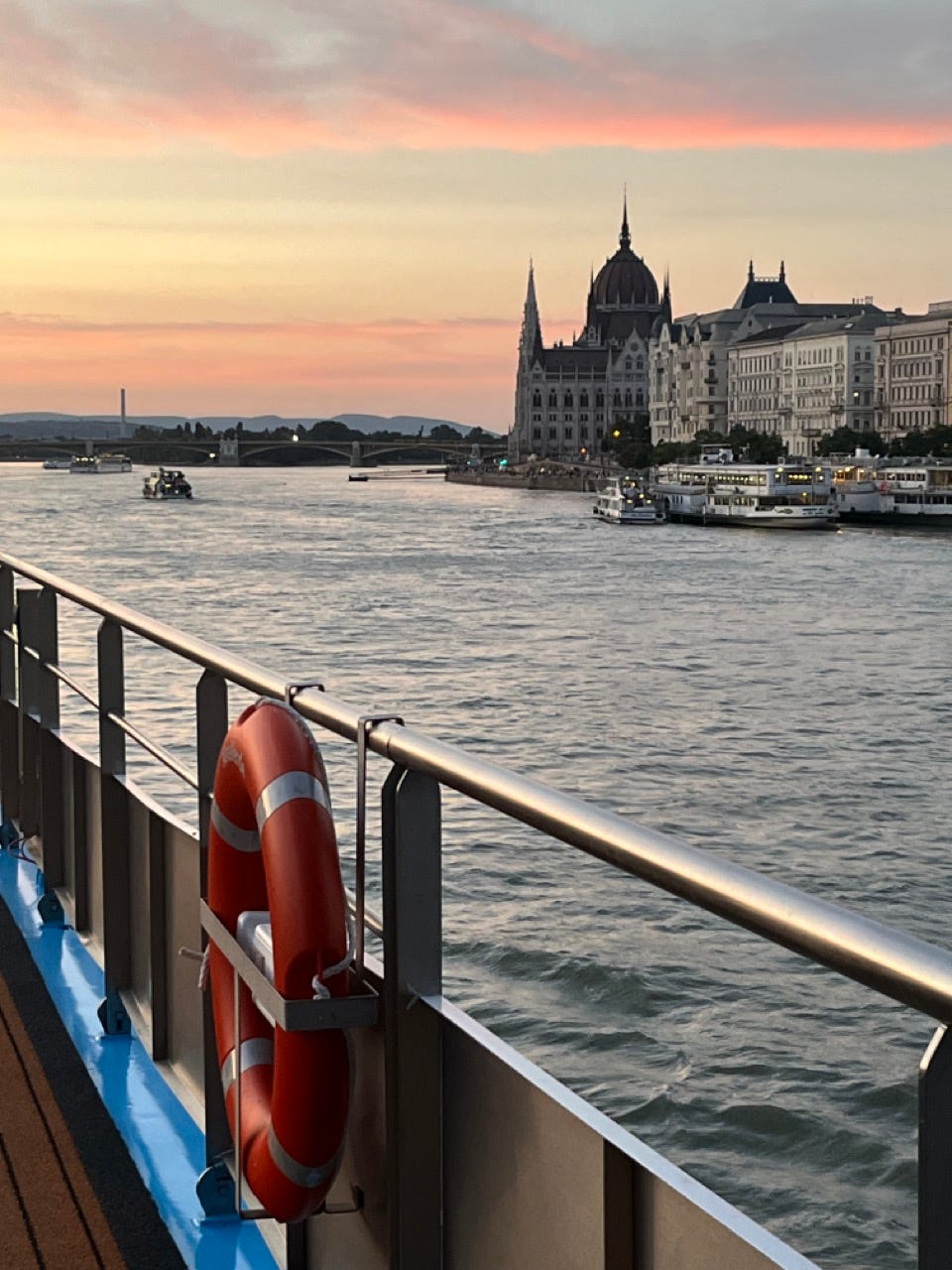


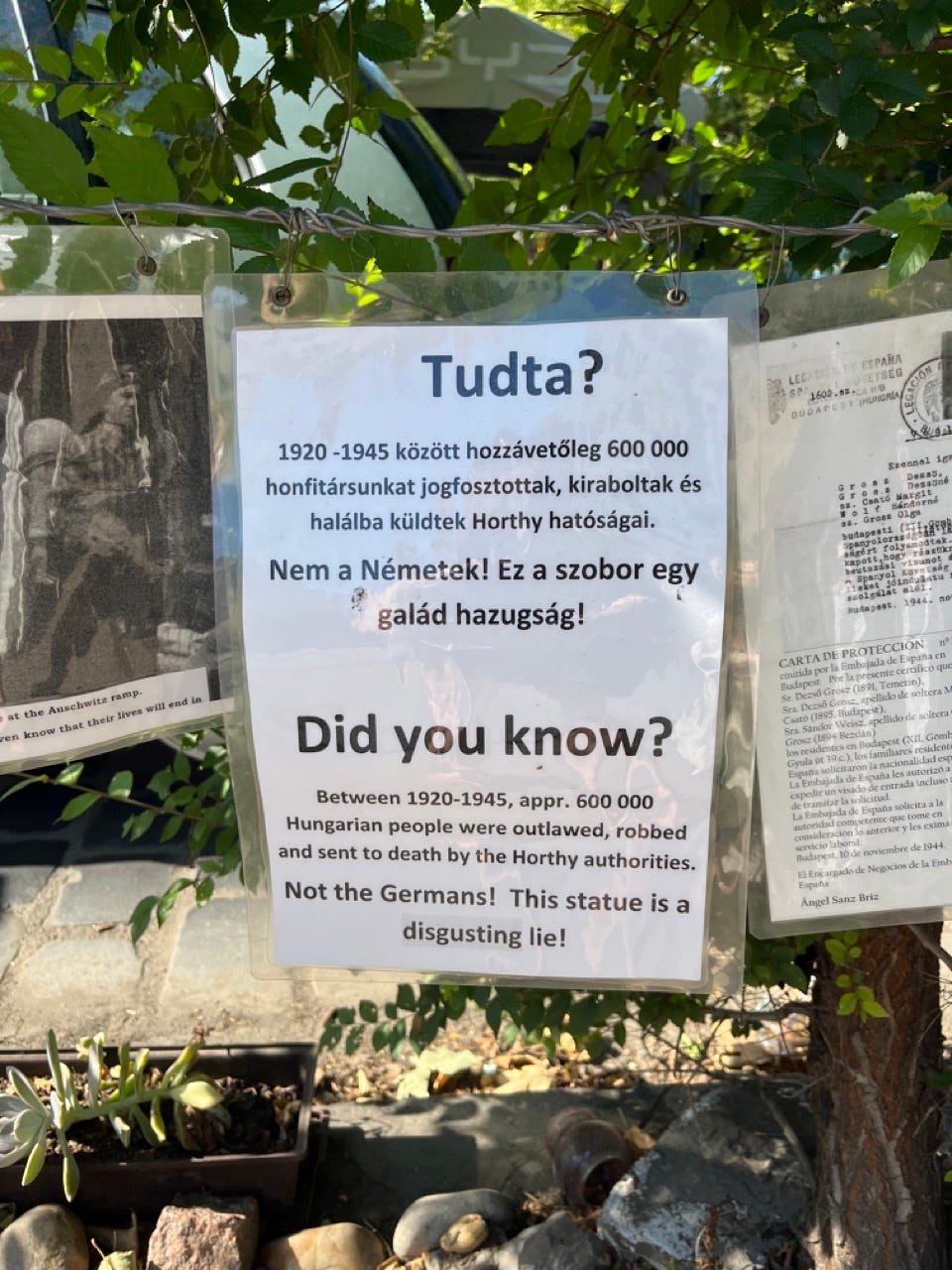


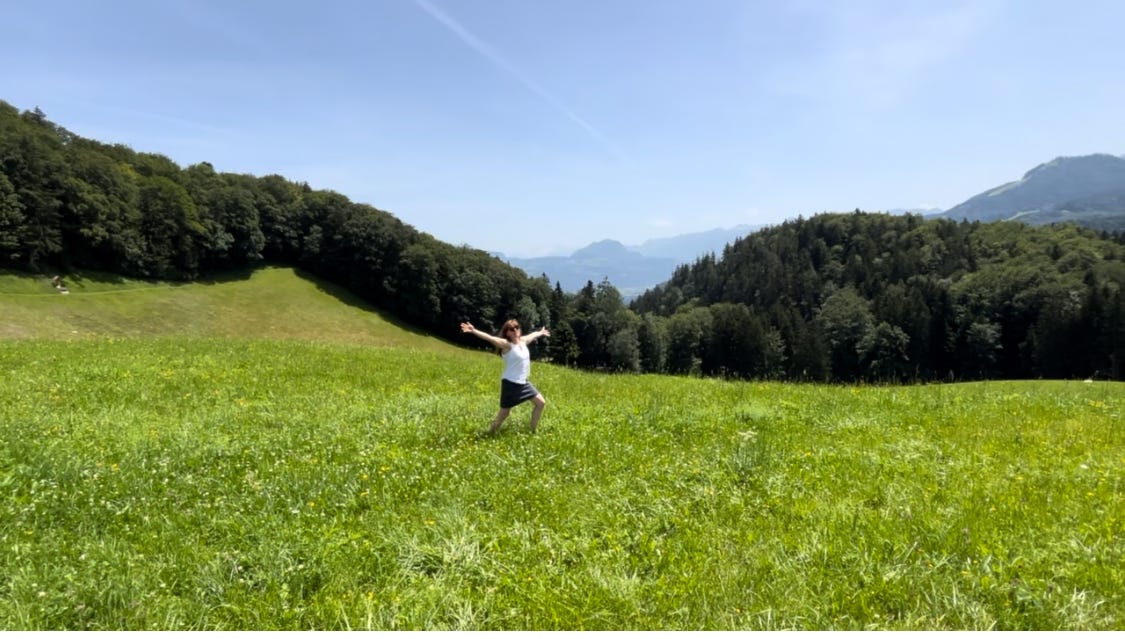


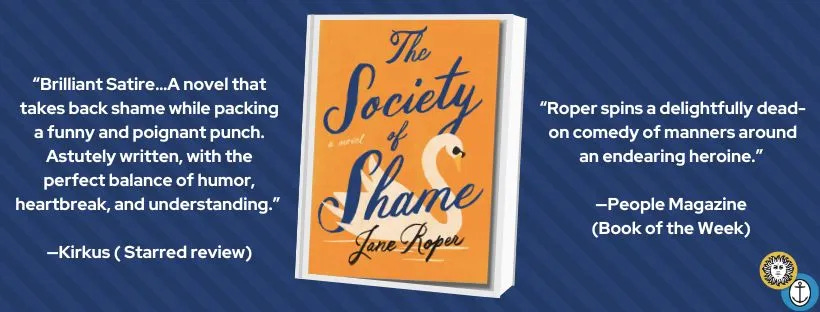
You might enjoy Beatriz Williams’ latest novel, Husbands and Lovers, which has a Hungarian WWII storyline (among others).
I did the sound of music dance in the hills of Switzerland. But I relate and worry about similar things in my travels abroad. What a thoughtful and delightful post. thank you, I just became a subscriber!